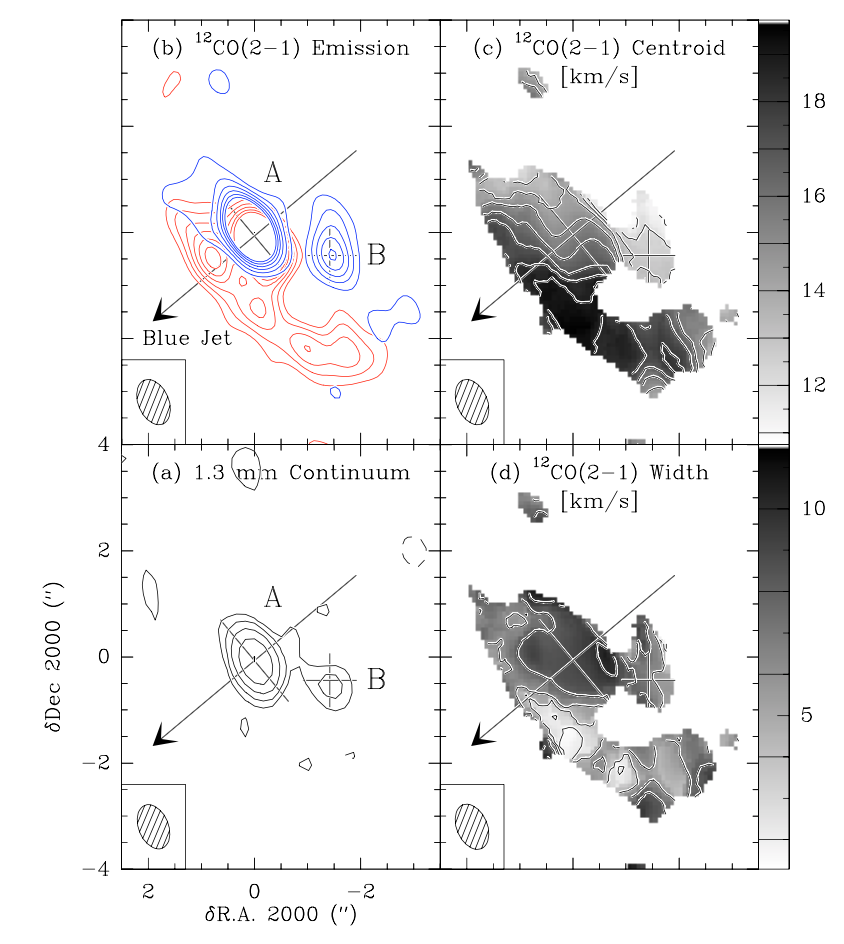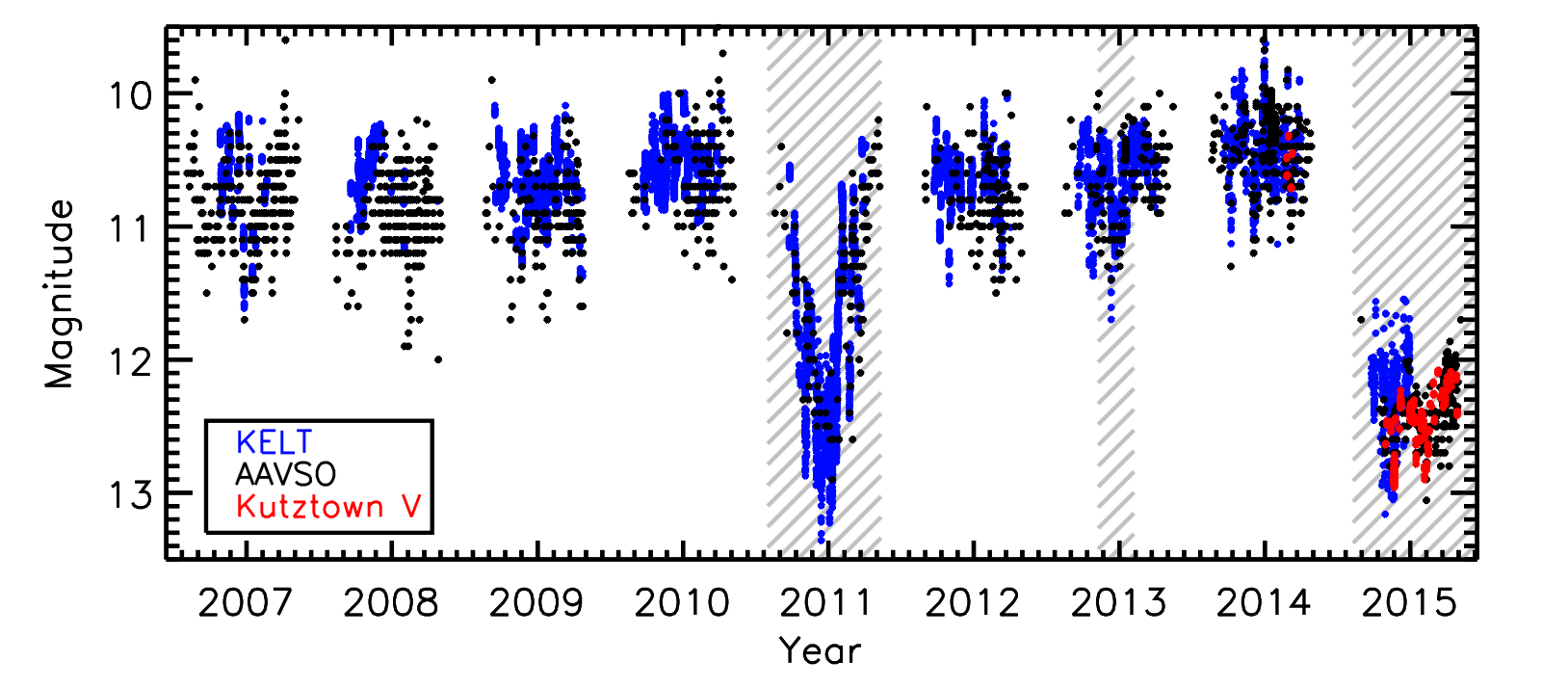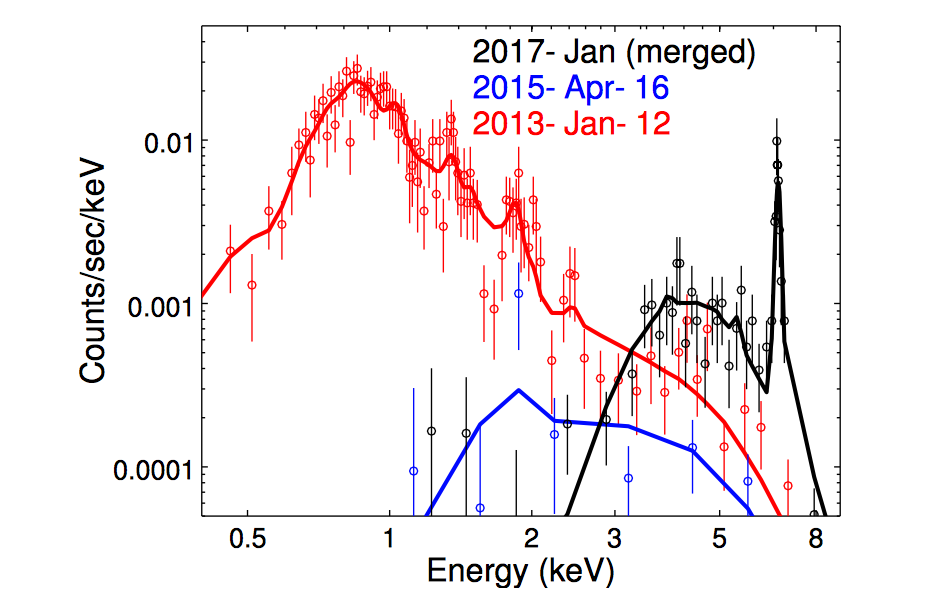The curious case of RW Aurigae
RW Aurigae consists of two young stars separated by ~200 AU, with the primary identified as a classical T Tauri star. The system is particularly intriguing because it exhibits several unusual features:
1. Cabrit et al 2006 reported a 600-AU-long tidal arm trailing the disk of star A, detected at millimeter wavelengths.

2. Rodriguez et al 2016 reported an unusually long (180 days) and deep (~2 mag) optical dimming of the system. By contrast, typical photometric variations of classical T Tauri stars last only days to weeks and rarely exceed 1 mag in depth.

We (Dai et al 2015 ) tested whether these unusual features could be explained by a star–disk flyby, in which the gravitational pull of the secondary star perturbs the primary’s disk. Using a suite of smoothed-particle hydrodynamics simulations spanning a range of system parameters, we identified a scenario that successfully reproduces all observed characteristics of RW Aurigae including the tidal arm, the relative separation and velocity of the two stars, and the CO isotopologue line profiles. The movie below highlights the striking similarity between the simulated and observed structures.
More recently, ALMA observations of this system revealed additional structures (Rodriguez et al 2018 ) that suggest RW Aurigae may have undergone multiple close-encounter events, in addition to the one we simulated in Dai et al 2015 . The orbits of RW Aurigae A and B may be bound.

Even more intriguingly, Chandra X-ray observations (Günther et al. 2018) revealed that the optical dimming coincides with an increase in the X-ray absorbing column density. During the dimming, they also detected an emission feature at 6.63 keV. Günther et al. 2018 speculated that this may signal the breakup of planetesimals or even a terrestrial planet. Such a disruption could produce the large grains responsible for the gray absorption, while also enriching the stellar corona with iron and giving rise to the 6.63 keV emission feature. Ultimately, this proposed disruption may be linked to the dynamical upheaval triggered by close encounters with the companion star.
